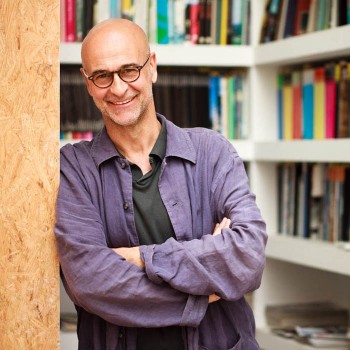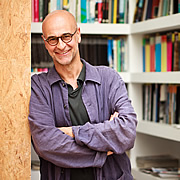TheArchHive. Interview

1. Describe the activities of Fernando Alda Photo. (We see that you sort your work in 3 main fields: Architecture, Engineering and Personal. Could you explain a bit more this?)
Since 1987 I worked professionally in various fields of photography. From then until 1993, I was responsible for monitoring and photographic documentation, construction and development of the Universal Expo in Seville. This period enabled me to develop many important works about architecture and engineering intensively and exclusively. I currently work independently and with my own studio in the recording, monitoring and documentation of buildings and urban infrastructure.
While working amongst professional commissions, I have developed my own personal projects, from which I have addressed various issues following the evolution of my creative and more intuitive interests. In this time, I gave a photographic shape to various projects related to some of the ideas that interest me most and that are recurrently connected with the topic of the trip. Images in which the time, space and landscape are very present and related to each other or with human presence. We have recently redesigned my website aiming to reflect this diversity of interests and show both, professional works and my personal projects. The former are constantly updated, following the intensity of the professional work, while the latter are more slowly incorporated, which is the pace of development.
2. From your professional point of view, how important you see your role -as a photographer- for architects and their promotion? In other words, how important is nowadays the photography for the architecture? What is the relationship between a well-done building and a building well-photographed?
I think that the importance of communication that nowadays architectural photography has taken is unquestionable. In recent years, the development reached by the media based on the printed publication (magazines, yearbooks, catalogs …) implied that in many cases, the photography surpasses the text, drawings and models as tools of description. Although disagreeing with it -because I consider the text as important support for the project as well as the drawing as critical/theoretical support- this fact added extra pressure on my photographic work, which I can vouch for my greater experience. If I had to start now with my work, it would have been rather difficult, since the professional standards are very high. Moreover, I have always wanted to work in a close relationship of exchange and mutual enrichment with the architects. Therefore I do not think you can really differentiate between a well-constructed and well photographed building. In my opinion, the picture can only improve some punctual defects in buildings and this is not an important goal. I always look for different images than expected by everyone, and also I try to making them with the highest photographic quality possible. A minor work, a worthy or a great work will always show their values and reach their level of communication (i.e. publication) by its architectural features. I do not think that differences in quality are a matter of photography. The best projects will not allow for bad photographs, just because surely they will be photographed by several high-level professionals. I think that architecture is better shown with better pictures, but always within its own architectural values; which seems, to architects and me, very important.
3. What distinguish your photography from the others?
Firstly I should say that I have not developed a formal language for the identification of my images. I do not pursue the uniqueness and recognition of my pictures and I am personally against some technical adjustments that are used to configure certain authorship (saturation or color attenuation, vignetting, wide-angle lens, etc). The reason why I adopt this attitude may seem simple, but I think that they do not improve communication skills of the photographed work but, rather, they interfere with them. Having discussed this issue, I am aware of some variables that are very present in my work. I do not use them in a Mannerist way, but I think that they are essential and I will keep using them, with more or less evidence.
In any case, despite my personal position, there are elements that identify my pictures enough. At least this is what some architects and publishers told me. I cannot say much more about this.
4. What is the goal behind each of your shot?
It is difficult to answer this question if the question is put in such way, because the goals I want to achieve when I make each of my shots are different and complementary, since my work is always done in the form of reportage. Since I use digital media, I take many pictures and I pay a great attention to the post-production. Each image must have an important role within the image set. If it is not, although kept in the archive, it will not remain after the final editing we do before the final delivery. My general scheme of work could be described as follows.
First, I spend enough time and a significant number of shots to the general description of the building, especially analyzing the relationship with its surrounding and location. With this, I try to show the building in its singularity and, through its relationship with the place, I try to establish differences from other architectures. Afterwards I take a large number of shots to document the typo-morphological features (spaces and forms, uses and program), with special attention to the building construction system, the unique elements of the construction and details. Beside all this work, this approach is often just an excuse for me to get acquainted with the building, discovering its uniqueness and its manifestations over the time, always limited, and the lights. This forces me to constantly improvise and use my intuition that, frankly, is my best professional tool. I always seek the unexpected and I leave myself being attracted by an invisible image that is always hidden behind the obvious.

